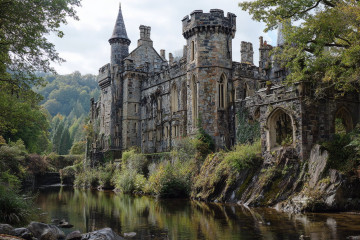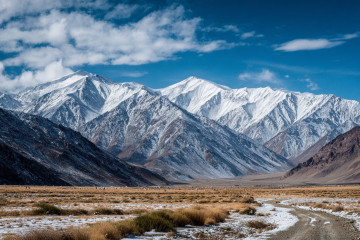What would you guess the most visited cities in the world are? Tokyo? New York? The answer might just surprise you. Every year, millions of travelers chart familiar paths across the globe—be it for food, faith, fashion, or simply to stand in the shadow of a landmark they’ve seen a hundred times on screen. According to Euromonitor International’s City Destination Index, a handful of cities continue to rise above the rest, collecting more arrivals than anywhere else on earth. Some are expected, others less so, and together they paint a picture of how and why we travel today. Here are the 10 most visited cities in the world.
10. Kuala Lumpur, Malaysia
Kuala Lumpur’s reputation is often reduced to the gleam of the Petronas Towers, but the city’s rhythm is best understood at street level. In Jalan Alor, satay skewers smoke over open flames while plastic stools spill into the road. Mosques call to prayer beside Taoist shrines lit with red lanterns; Indian spices mingle with the sweetness of tropical fruit. It’s this layering of cultures (Malay, Chinese, and Indian) that draws travelers in. More than 16 million arrived last year, many expecting a stopover, and found a city that rewards those willing to linger.
9. Paris, France
Paris has never fallen from the traveler’s imagination. Over 17 million visitors still make their way here each year, proof that its spell endures. The Eiffel Tower and the Louvre remain fixtures, but it’s the smaller moments that sustain its appeal: a croissant eaten on a wicker chair overlooking the street, a book discovered in the green boxes along the Seine, a wine glass catching the last light on a cafe terrace. The city’s charm lies in the Parisian lifestyle, one that travelers can’t seem to get enough of.
8. Macau, China
Macau welcomed 18 million visitors last year, many drawn to the neon of Cotai’s casino floor, yet the city’s true magnetism lies beyond its roulette wheels. Senado Square ripples with Portuguese mosaic pavements, pastel-colored churches recall a colonial past, and Cantonese food stalls line narrow streets where incense drifts from temples. Egg tarts, still baked to a 19th-century recipe, emerge warm from the oven. Macau’s appeal is in this juxtaposition, part Europe and part southern China, a place where travelers encounter the improbable layering of two worlds within the same city.
7. Dubai, United Arab Emirates
Dubai ranked seventh, with close to 18 million visitors last year, drawn to a city that offers everything in one place. Towering hotels, Michelin-starred dining, designer shopping, and white-sand beaches sit minutes apart, wrapped in a sense of polish that makes the everyday feel indulgent. It’s this promise of luxury, whether a desert safari ending with dinner under the stars or a weekend spent between spas, malls, and rooftop bars, that keeps people returning. Dubai has built a reputation on spectacle, but its true allure is the assurance that whatever you want, you can have it here.
6. Antalya, Türkiye
Just over 19 million travelers made their way to Antalya in 2024, establishing it as one of the Mediterranean’s busiest resort cities. The coastline offers the easy promise of beaches and turquoise bays, but history remains woven into daily life. The old town, Kaleiçi, hides narrow streets lined with Ottoman houses, while the harbor still follows the curve of its Roman foundations. Beyond the resorts, mountain peaks rise sharply behind the city, a reminder of the landscapes that once shaped ancient Lycian settlements. Antalya thrives on this interplay between resort ease and visible antiquity, and so do its visitors.
5. Mecca, Saudi Arabia
No other city on this list carries quite the same weight as Mecca. More than 19 million pilgrims traveled to the Holy City last year, arriving for Hajj or Umrah. Here, movement is ritual, not leisure: circles made around the Kaaba, prayers woven into the architecture of the Grand Mosque, the rhythm of faith amplified across nations. Unlike other destinations, Mecca’s draw is not the diversity of experience, but rather the singularity of meaning. Its place among the most visited cities on earth is a testament to devotion, shaping the largest flow of religious travel in the modern world.
4. Hong Kong, China
In fourth place with more than 20 million arrivals, Hong Kong holds its place as a city that condenses a great deal into very little space. Ferries still cross Victoria Harbour with the same regularity they have for over a century, even as the skyline grows higher around them. Food is a constant lure—from dim sum mornings to late-night noodle shop stops—but so is escape, with hiking trails and island ferries only minutes from the financial core. It sits high on the list because the city never forces a choice between pace and pause; it offers both, side-by-side.
3. London, United Kingdom
London holds the third spot on the list, welcoming nearly 22 million visitors last year. Its enduring appeal lies in the centuries-old cathedrals and abbeys, the Crown Jewels and Shakespeare’s Globe. But between the centuries of history, the city still manages to reinvent itself daily through food halls in warehouses, avant-garde theatre in Soho or pop-ups that vanish as quickly as they arrive. Travelers may come for Big Ben or Buckingham Palace, but it’s the neighborhoods—each tube stop a different character—that give London the weight to remain one of the world’s most visited capitals.
2. Istanbul, Türkiye
In 2024, more than 23 million travelers arrived in Istanbul, a city that still thrives on crossings. Ferries trace the Bosphorus from morning until night, carrying commuters between continents. In Sultanahmet, the blue tiles of the mosque catch the same light that falls on the domes of Hagia Sophia across the square. Bazaars stocked with saffron and copper sit streets away from galleries and cafés that speak to a younger rhythm. The attraction is not one landmark but the accumulation; layers of empire and culture, past and present, visible at every turn.
1. Bangkok, Thailand
Bangkok tops the list, welcoming more than 32 million visitors in 2024. The city moves at full tilt: tuk-tuks threading through traffic, long-tail boats skimming the Chao Phraya, food stalls filling the night air with lime, chili, and charcoal smoke. Monks collect alms at dawn outside temples gilded in gold leaf, while above the chaos, rooftop bars stretch the skyline into the distance. Yet step into the canals and the pace slows, revealing wooden houses and quiet markets that feel unchanged with time. Bangkok draws people for its contrasts, crowded and calm, sacred and frenetic, all contained within one restless capital.



